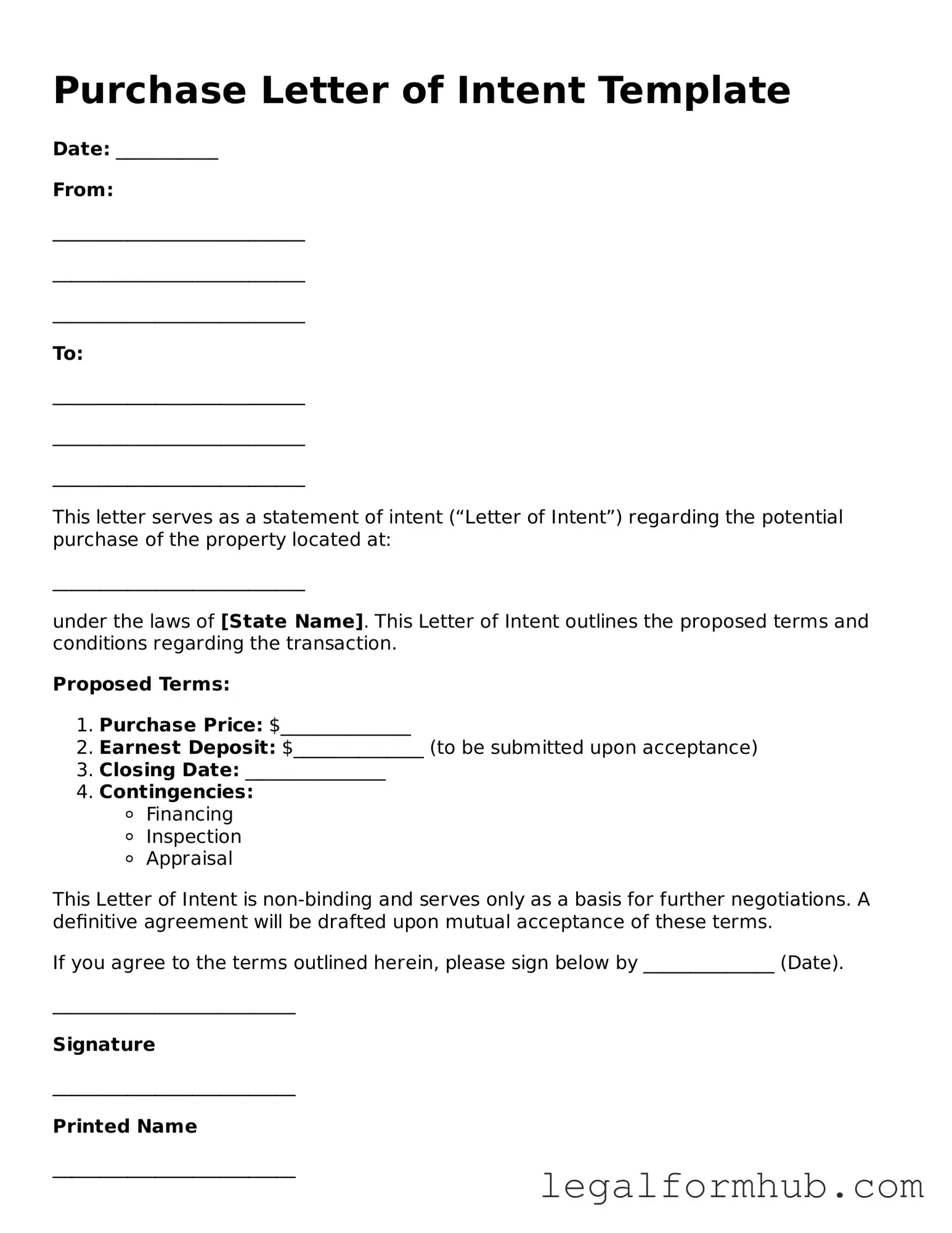The Purchase Letter of Intent (LOI) shares similarities with a Memorandum of Understanding (MOU). Both documents serve as preliminary agreements outlining the intentions of the parties involved. An MOU typically expresses a mutual understanding and can be less formal than a contract, yet it still conveys the desire to move forward with negotiations. Like an LOI, an MOU can detail key terms, such as the scope of the project and responsibilities of each party, but it often lacks the binding legal implications that a more formal agreement might carry.
A Term Sheet is another document that resembles a Purchase Letter of Intent. It outlines the key terms and conditions of a proposed agreement, usually in a more structured format. While an LOI may focus on the intent to negotiate a purchase, a Term Sheet provides specific details about the transaction, such as pricing, timelines, and contingencies. Both documents facilitate discussions and help clarify expectations, but a Term Sheet is often more detailed and may serve as a foundation for drafting a formal contract.
For families looking to begin homeschooling, it's important to prepare the necessary documents. The California Homeschool Letter of Intent guidelines help clarify the steps required to officially notify the state of your plans.
An Offer Letter is also akin to a Purchase Letter of Intent, particularly in the context of real estate or business acquisitions. An Offer Letter typically presents a specific proposal to purchase, including the price and terms of sale. While an LOI expresses general intent and may outline broader terms, an Offer Letter is more direct and can be seen as a step closer to finalizing the deal. Both documents aim to initiate negotiations, but an Offer Letter is usually more definitive in its terms.
